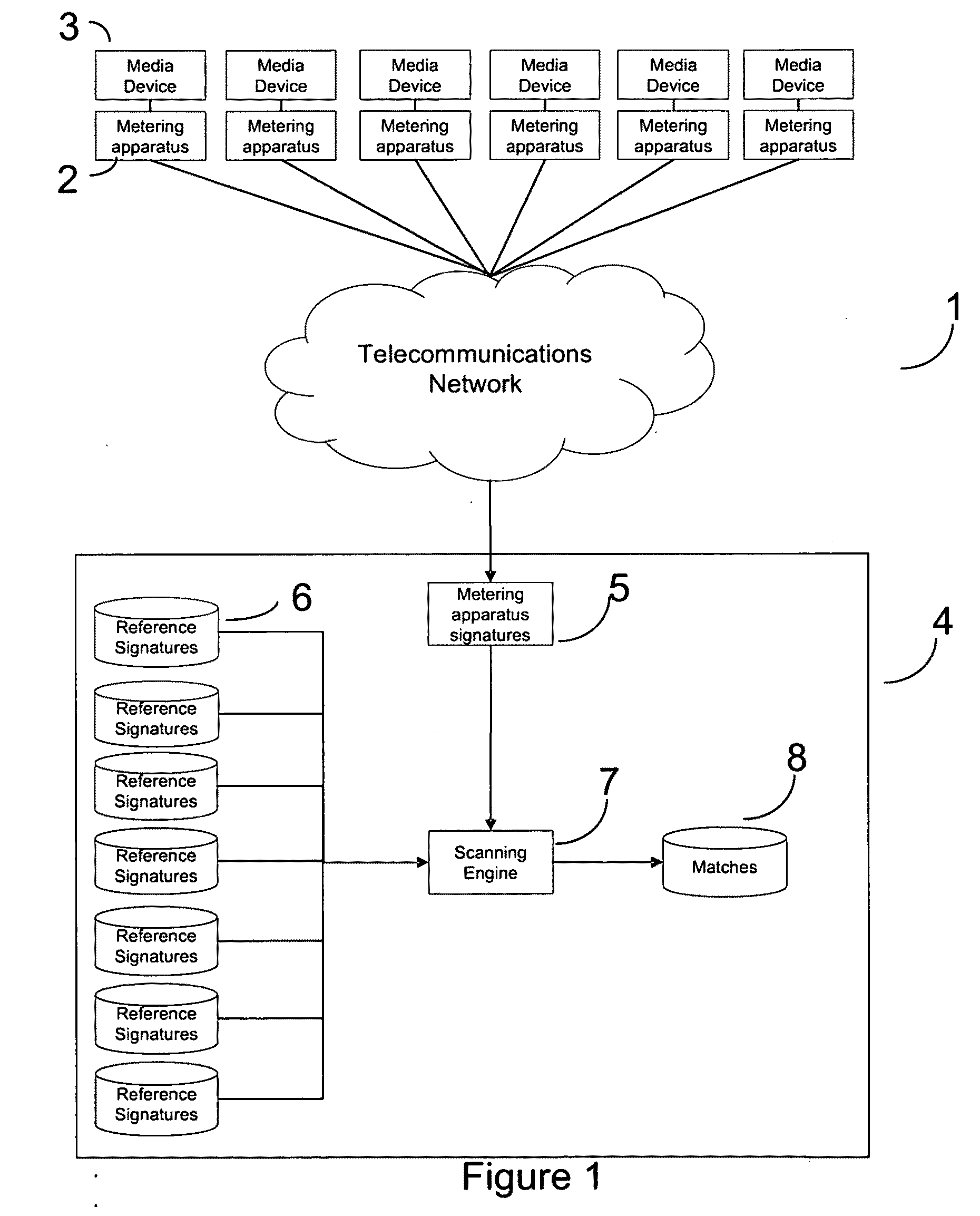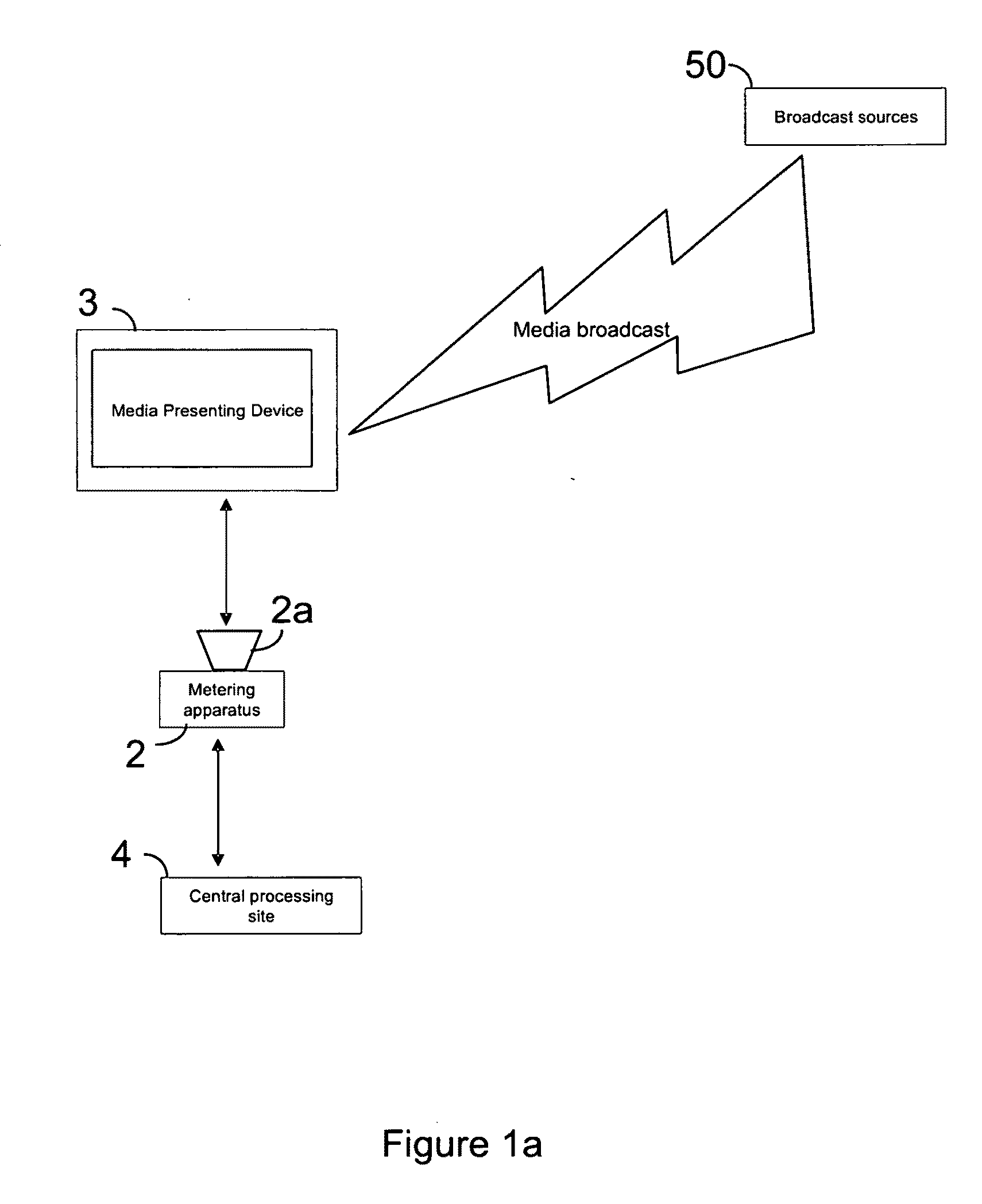Simulcast resolution in content matching systems
a technology of content matching and simulation, applied in the field of system and method of measuring the presence of an audience in a media presentation, can solve the problems of inability to solve the problem of analogue broadcast signals, inability to provide best guess based on historical data, and inability to unequivocally assign content to the audience measurement system
- Summary
- Abstract
- Description
- Claims
- Application Information
AI Technical Summary
Benefits of technology
Problems solved by technology
Method used
Image
Examples
Embodiment Construction
[0027]In a typical audience measurement system 1 (see FIG. 1) a metering apparatus 2 (called “Meter”) is used to measure the viewing activity of one or more members of a household with regards to a predefined media presenting device 3.
[0028]An individual metering apparatus 2 is shown in more detail in FIG. 1a. Each metering apparatus 2 (of a plurality of metering apparatuses in the measurement system 1) obtains data concerning a broadcast, which is being received from one of a plurality of broadcast sources 50 and accessed on media presenting device 3 by a user. As shown in FIG. 1a, the depicted metering apparatus 2 comprises an audio transducer 2a that receivers an audio signal (transmitted from the media presenting device 3 as sound through the air). The audio signal is converted into an electrical signal from which a signature is generated corresponding to the unknown content being viewed on multimedia presenting device 3. Alternatively, the metering apparatus 2 may be directly c...
PUM
 Login to View More
Login to View More Abstract
Description
Claims
Application Information
 Login to View More
Login to View More - R&D
- Intellectual Property
- Life Sciences
- Materials
- Tech Scout
- Unparalleled Data Quality
- Higher Quality Content
- 60% Fewer Hallucinations
Browse by: Latest US Patents, China's latest patents, Technical Efficacy Thesaurus, Application Domain, Technology Topic, Popular Technical Reports.
© 2025 PatSnap. All rights reserved.Legal|Privacy policy|Modern Slavery Act Transparency Statement|Sitemap|About US| Contact US: help@patsnap.com



